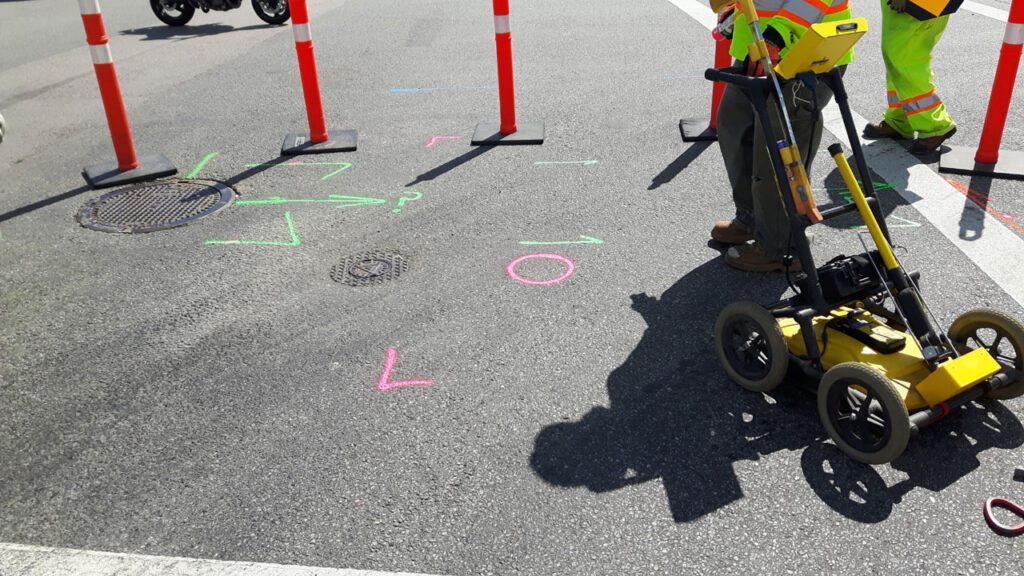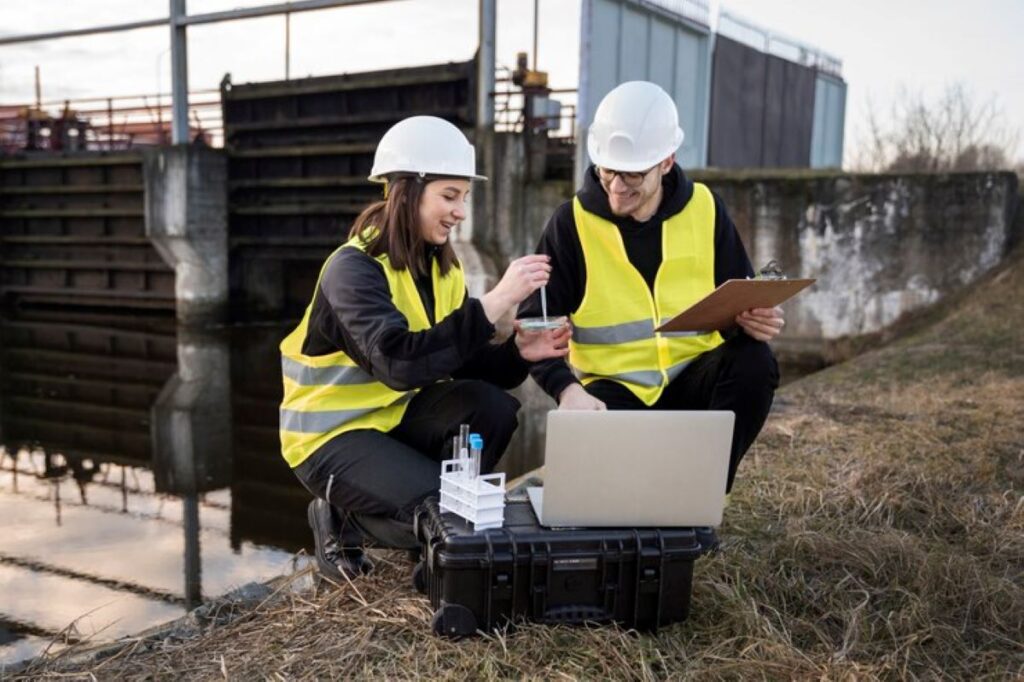Water pipe locators are essential tools that play a vital role in infrastructure planning. As urban landscapes continue to evolve and expand, the need for accurate mapping and detection of underground utilities becomes increasingly crucial. This article explores the significance of water pipe locators in infrastructure planning, delves into advancements in technology, and discusses the benefits and future of these tools.
Understanding the role of water pipe locators in infrastructure planning
Water pipe locator serve as critical instruments in ensuring the successful development and maintenance of infrastructure. They help identify the precise location of water pipes buried underground, enabling planners and contractors to make informed decisions when undertaking excavation or construction projects.
The role of these locators extends beyond mere identification; they facilitate risk mitigation by preventing accidental damage to vital water infrastructure. When construction teams have accurate knowledge of pipe locations, the chances of disrupting service or causing environmental hazards are significantly reduced. This is particularly important in urban areas where water services are essential for daily life, and any disruption can lead to significant inconvenience for residents and businesses alike.
The basic principles of water pipe locators
Water pipe locators operate on fundamental principles that involve the use of electromagnetic fields or ground-penetrating radar. Electromagnetic locators transmit a signal through pipes, which can be detected by a receiver, pinpointing the pipe’s exact location. This method is particularly effective for metallic pipes.
Ground-penetrating radar, on the other hand, uses high-frequency radio waves to create images of subsurface structures. By interpreting these images, operators can discern the position of water pipes, even those made from non-metallic materials. Both technologies are invaluable in effectively mapping underground utilities and preventing costly mistakes during construction. Moreover, the ability to detect various types of pipes, including those made from plastic or concrete, underscores the versatility of these locators in diverse environments, from rural settings to densely populated urban landscapes.
How water pipe locators contribute to efficient infrastructure planning
Efficiency in infrastructure planning is greatly enhanced through the utilisation of water pipe locators. By providing precise locations of existing water lines, these locators help streamline the planning processes associated with new construction projects. This precision contributes to better project timelines, as it reduces the likelihood of delays caused by unexpected utility strikes.
Furthermore, accurate locators promote better coordination among various stakeholders involved in construction, such as engineers, planners, and contractors. The shared understanding of the utility layout fosters collaboration and minimises miscommunications, paving the way for smoother project execution and reduced costs. In addition, the integration of modern technology with traditional surveying methods allows for real-time data sharing, enabling teams to adapt quickly to any changes in project scope or unforeseen challenges. This adaptability is crucial in today’s fast-paced construction environment, where time and resources are often at a premium, and the ability to respond to issues promptly can make all the difference in the overall success of a project.
The technological advancements in water pipe locators
Technological evolution has transformed traditional water pipe locators into advanced, user-friendly devices, which significantly enhance their effectiveness. Understanding these advancements lays the foundation for appreciating the current landscape of infrastructure planning tools.
The evolution of water pipe locator technology
Water pipe locator technology has come a long way from the simple manual devices of the past. Today’s locators feature advanced digital displays, improved signal processors, and more sensitive detection systems. These innovations allow operators to locate pipes more accurately and efficiently than ever before.
Moreover, the integration of global positioning systems (GPS) into locators has enabled professionals to map the locations of water pipes with unparalleled precision. This integration has simplified the documentation process, allowing for the easy creation and updates of utility mapping records. Additionally, the incorporation of augmented reality (AR) into these systems is revolutionising the way operators visualise underground infrastructure. By overlaying digital information onto the physical world, AR can provide real-time insights into the location and condition of pipes, making it easier to identify potential issues before they escalate.
The impact of modern technology on water pipe locators
Modern technology has also introduced user-friendly interfaces, making it easier for operators with varying levels of expertise to effectively use water pipe locators. Enhanced connectivity features enable operators to transfer data in real-time, providing immediate access to information for decision-making during planning and execution.
As technologies continue to develop, future locators are likely to incorporate machine learning algorithms to improve accuracy and predictive capabilities. The use of drones and mobile applications for utility mapping is another exciting frontier, promising even greater reliability and efficiency for infrastructure planning. Furthermore, the advent of cloud computing allows for the storage and analysis of vast amounts of data collected from various sites, enabling companies to identify trends and optimise their operations. This not only enhances the maintenance of existing water systems but also aids in the design of new infrastructure, ensuring that it meets the demands of growing urban populations.

The benefits of using water pipe locators in infrastructure planning
The adoption of water pipe locators in infrastructure projects brings forth numerous benefits. These advantages span improved safety, cost-effectiveness, and operational efficiency, making them indispensable tools for modern planners and contractors.
Enhancing safety measures with water pipe locators
Safety is paramount in any construction project, particularly when dealing with underground utilities. Water pipe locators significantly enhance safety measures by reducing the risks of utility strikes, which can lead to severe accidents and service interruptions.
By accurately identifying the locations of water pipes, excavation teams can take appropriate precautions to avoid damaging these essential infrastructures. This safety foresight also protects workers and the public, fostering a more secure working environment. Furthermore, the implementation of water pipe locators contributes to a culture of safety within the organisation, as teams become more aware of the potential hazards associated with underground utilities. Regular training sessions on the use of these locators can also enhance team skills, ensuring that all personnel are well-versed in the latest technology and safety protocols.
Cost savings and efficiency gains from using water pipe locators
Cost savings are another critical benefit associated with water pipe locators. By preventing utility strikes during excavation, these tools help avoid costly repairs and downtime, which can derail project timelines and inflate budgets. Additionally, accurate detection promotes better planning, reducing the time and resources spent on exploratory digging.
Efficiency gains are further realised through improved project coordination and communication among stakeholders, as mentioned previously. The integration of water pipe locators into project workflows translates into a more streamlined process, resulting in projects being completed on time and within budget. Moreover, the data collected from these locators can be invaluable for future projects, as it provides a comprehensive map of existing utilities. This information not only aids in planning but also enhances the ability to respond swiftly to any issues that may arise, ensuring that infrastructure development remains both proactive and reactive in nature. The long-term benefits of having a well-documented utility landscape cannot be overstated, as it lays the groundwork for more efficient and effective urban planning initiatives in the future. Visit https://rentersinsurancesocal.com/how-pipe-location-services-help-avoid-costly-damages/ to get about how pipe location services help avoid costly damages.
The future of water pipe locators in infrastructure planning
As the infrastructure landscape continues to evolve, so too will the technology and applications of water pipe locators. A forward-looking perspective on these tools allows us to anticipate emerging trends that will shape their future roles in planning.
Emerging trends in water pipe locator technology
One emerging trend is the ongoing miniaturisation of locator devices, making them lighter and more portable. This will enhance their usability in diverse environments, allowing for easier deployment in confined or difficult-to-access areas. The development of compact, handheld devices means that even smaller teams can efficiently conduct surveys without the need for extensive equipment setups, thereby saving both time and resources.
Moreover, increased automation in data collection and analysis is set to redefine how professionals utilise locator technology. The potential of artificial intelligence in interpreting detection data can lead to more informed decision-making, ultimately enhancing the efficiency of infrastructure planning. By integrating machine learning algorithms, these locators can learn from previous data sets, improving their accuracy and reliability over time. This shift not only streamlines the workflow but also empowers engineers and planners to make proactive adjustments based on predictive analytics.

The potential of water pipe locators in sustainable infrastructure planning
Sustainable infrastructure planning is becoming a dominant focus within the industry, and water pipe locators play a pivotal role in this regard. By accurately identifying existing utilities, planners can optimise resource allocation and reduce environmental disturbances during construction activities. This capability is particularly crucial in urban areas where space is limited and the risk of damaging existing infrastructure is high. The ability to visualise underground utilities before breaking ground can significantly mitigate potential hazards and costly repairs.
Furthermore, advancements in locator technology can assist in the strategic placement of new water infrastructure, ensuring efficient water management and conservation. As cities around the world grapple with increasing pressures on water resources, the importance of these technologies in promoting sustainability cannot be overstated. Innovative features such as real-time monitoring and remote sensing capabilities enable planners to adapt to changing environmental conditions and population demands swiftly. This proactive approach not only preserves existing water supplies but also enhances the resilience of urban water systems against climate change impacts.
As we look to the future, the integration of water pipe locators with other smart technologies, such as geographic information systems (GIS) and the Internet of Things (IoT), will further revolutionise infrastructure planning. This interconnectedness will allow for a comprehensive view of urban water systems, facilitating better management practices and fostering collaboration among various stakeholders. The synergy between these technologies promises to create a more sustainable and efficient urban environment, ultimately benefiting communities and ecosystems alike.

